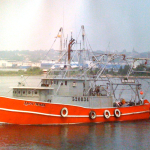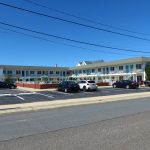Collapse of Florida condo is a wake up call.
We have seen images of the stunning and unexpected collapse of Champlain Towers South condominium in Surfside, Fla. This tragedy has impacted so many lives. Days after the collapse, work continues at the site as hope fades to find survivors.
As the initial shock subsides, authorities will seek to find answers questions about why the building collapsed and how it could have been prevented. Proper authorities will conduct a thorough investigation.
Lawsuits have been and will continue to be filed against any and all parties even remotely connected to the Association.
According to Community Associations Institute, the trade organization for community associations and developments and related partners and professionals across the country, the purpose of community associations everywhere is to bring people together, strengthen neighborly bonds, promote a sense of belonging, and build a place where we can connect. An event such as this can both strengthen and fray those connections.
For the past 30 years, I have been involved in the management of condominium associations in southern New Jersey, many on the oceanfront. I have years of working with association board members and professionals to guide them through extraordinary projects including exterior façade rehabilitation, structural reinforcement and similar deferred maintenance projects valued in the millions of dollars.
Within the condo association, typically individual members are elected to serve as the board, that is, the group of owners chosen among their peers to make decisions on how best to operate their association. This may involve hiring a manager to handle the day-to-day activities, staff to clean and operate the building, and other professional contractors that have necessary skills and experience to provide the services expected by association members. These board members are typically uncompensated volunteers, working in a fiduciary capacity.
For many condo owners that own a condo in an oceanfront community, their condo is a second home. Depending on where they live or their stage in life, they either use it for weekends, as a seasonal home, as a family gathering place or as a source of rental income.
For many of the associations I manage, there is no mission statement. For those associations, I try to introduce a mission statement. The best is the simplest, and its one I heard early on in this career: “To preserve, protect and enhance the quality of life for residents”.
That statement can mean different things to different individuals, but to me it means taking care of things in order. There is an order to managing a community association. In specific order, it means prioritizing safety, infrastructure and then, aesthetics.
Safety is simple. Make sure all essential systems are working; such as fire alarm and suppression systems, elevators, heating and cooling plants, domestic water pumps, and any essential systems to operate the building and protect residents. These items are usually part of the component asset schedule and funded through HOA fees.
Aesthetics is also simple and straightforward. The décor, the recreational amenities like tennis courts, a nice pool, exercise room and fancy lobby décor. It’s the things that resident’s value. Niceties. Important, but third in the hierarchy of association obligations.
Infrastructure is the mis-understood, under-appreciated and most forgotten component. Its things like periodic deferred maintenance such as exterior sealant and waterproofing of building walls and decks. It may include replastering of pools to prevent water infiltration into the concrete structure. It includes but is not limited to annual and periodic inspections of exterior façade, garages, balcony railings pool decks and the building structure.
I develop deferred maintenance schedules for condo associations. I have seen on multiple occasions where the annual funding obligation for deferred maintenance is higher than for safety components and reserve funding. You see, the asset replacement schedule is projected over a 30 or 40 year cycle, but deferred maintenance operates on a much shorter timeframe, often ten years or less. Therefore, while annual funding for reserve replacement might be $100,000 for an association with an annual operating budget of $1 million, that same association could expect an annual funding obligation for deferred maintenance to be over $150,000 per year, depending on how much exterior surface area there is, how the balconies are configured and even how the building is oriented to the beach and prevailing storms.
So what happens – Infrastructure funding is typically the first to get slashed in cost-cutting times, or when a new member joins the board, especially when said individual joins the board on a platform of cutting costs. Now that may be fine for a few years, but over time, as is sadly and painfully evident to all of us at this time, avoiding deferred maintenance does not make it go away. But that’s assuming the association even has deferred maintenance funding in its budget. Many do not.
Funding deferred maintenance takes strong board members with a willingness to listen to their professionals. Associations rely on property managers, engineers, attorneys and accountants on a regular basis. The board members that rely and act on their guidance are fulfilling their obligations to their fellow members.
Champlain Towers board held a meeting a few months ago to discuss their infrastructure plan and a huge special assessment ($15,000,000) to pay for it. The condo president prepared a well-written letter with supporting information provided by the association engineer. The board knew they had deferred maintenance needs. In a cryptic line foreshadowing this tragedy, the president wrote “A lot of this work could have been done or planned for in years gone by”.
Conducting and making such a presentation to members, (and telling them they need to come up with a lot of extra cash) take leadership. Strong leadership. Having to present a difficult subject, repeatedly review information to ensure all owners understand, spending time responding to questions from condo owners that think they know better than the experts and listen to those second-guess previous board actions and decisions; and to top it off, get into the occasional loud argument with the one obstinant condo owner and his buddies can be brutally draining.
Our buildings are exposed to severe environmental conditions. We are acutely aware of what a high chloride environment, weather extremes and water infiltration can do. I have been through extensive exterior rehabilitation projects to address the building envelopes to protect the structures and avoid a more serious and complicated problems.
I deal with numerous engineers throughout the course of my job. One structural engineer that I highly respect and admire shared his thoughts and advice. The oceanfront buildings, especially those 30 years or older need to have more attention paid to the foundation and piling systems, and to check the support beams. Spot checking some interior and exterior areas of the buildings may also help identify issues before they become problems.
Conduct visual condition surveys of the building exterior, and a more detailed investigation of the support columns and beams. Look for signs of settlement or movement of the support columns. This includes slab cracking. Soil washout and ocean water level rise may have affected the soil conditions under the building. Observe the top of the columns for signs of corrosion. Rust stains could indicate a problem.
Inspect the building super-structure including exterior facades for possible cracking, joint openings and water leaks, interior hallway areas and few interior condos for settlement cracks, look at the roof for possible movement, and observe balconies and railing support system.
Buildings benefit from professional inspections by structural engineers, mechanical engineers and exterior envelope experts inspecting multi-family buildings from different points of view. In this environment, our buildings need more maintenance and care compared to mainland structures.
How often? One structural engineer suggested a thorough structural inspection every five years. In the interim period, perform observations for any new concerns, which can be evaluate on a case-by-case basis.
The exterior façade is the first line of defense to protect structures. Exterior façade inspections should be conducted more frequently because problems tend to start from the exterior façade and if left untreated, migrate into the structure.
Ultimately it appears it was the lack of proper maintenance that led to the collapse of Champlain Towers South and to the loss of over one hundred fifty lives.
Building maintenance is owner responsibility. In the case of condominiums, the “owner” is the condominium association – the organization of individual condo unit owners joined together in common real estate ownership. People brought together from all over, united for one reason. The surviving condominium owners in Florida are going to go through a painfully difficult next few years.
Jim Yost owns Elite Management and Advisory Services, LLC and is managing partner of Ocean Property Management Corporation, based in Wildwood NJ. His firms manage over 30 condominiums in southern New Jersey, including several high rise and mid-rise oceanfront condominium buildings. He can be reached at yostopmc@comcast.net.
Avalon – The US will be begging people to come here in a few short years.The Florida Policy Institute estimates this immigration law could cost the state's economy $12.6 billion in its first year. That…







